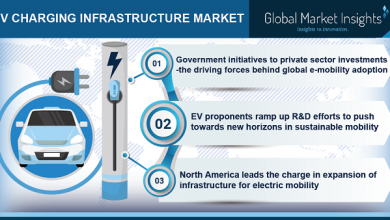Permanent Magnet & Induction Motors for Electric Vehicle
Electric vehicles are gaining ground and many automotive companies are launching their electric cars. It is expected that in future electric vehicles will be the main mode of transportation.
These vehicles are cleaner and more efficient as they have less number of moving parts than IC engine vehicles. They run on electric drive systems, electric motor, which converts electrical energy into mechanical energy, is the major part of the propulsion subsystem of the electric drive systems.
Induction Motor is one such type of motor which is popular in electric vehicles, it is followed closely by Permanent Magnet motors. Well known electric car Tesla model S relies on Induction motor while motor in Nissan Leaf and recently unveiled Porche’s Turismo concept vehicle is permanent magnet synchronous motor.
Induction motors have benefits like low cost, high reliability and maintenance-free operation. It is an asynchronous type of motor, so the rotor always rotates at a lower speed than the magnetic field. It relies on electric current to turn the rotor and produce torque. The electric current is generated through electromagnetic induction from the magnetic field of the stator windings. Induction motorscan be used without a variable frequency drives (VFD) and are also cheap to manufacture.
However, conventional control of induction motor such as variable voltage, variable frequency cannot provide the desired performance and they also suffer from lower efficiency as well as power density compared to their Permanent Magnet counterparts.
Permanent magnet synchronous motors are thus gaining popularity due to high power density, compactness and current availability of power electronics needed for effective control. Also, these motors are designed to be more powerful while also having a lower mass and lower moment of inertia, high torque-to-current ratios, high power-to-weight ratios, and robustness.
The permanent magnet synchronous motor has features of both induction motor and brushless DC motor. Like a brushless DC motor, it has a permanent magnet rotor and windings on the stator. However, the stator structure with windings resembles that of an induction motor.
Permanent magnet synchronous motor relies on magnets to turn the rotor, which spins at the same speed as the PMSM’s internal rotating magnetic field.
They cannot run without a drive and a VFD is required to precisely control the speed of the PMSM to meet the application requirements for pressure, flow, volume, etc. Permanent magnet motor solutions thus tend to have a higher initial cost, despite recent increases in the price of permanent magnets, they are still profitable.
According to an Allied Market Research, the world PMSM market is likely to generate revenue of $31.1 billion by 2022, growing at a CAGR of 10.9% from 2016 to 2022. Asia-Pacific is expected to dominate the PMSM market in terms of revenue as well as volume.




